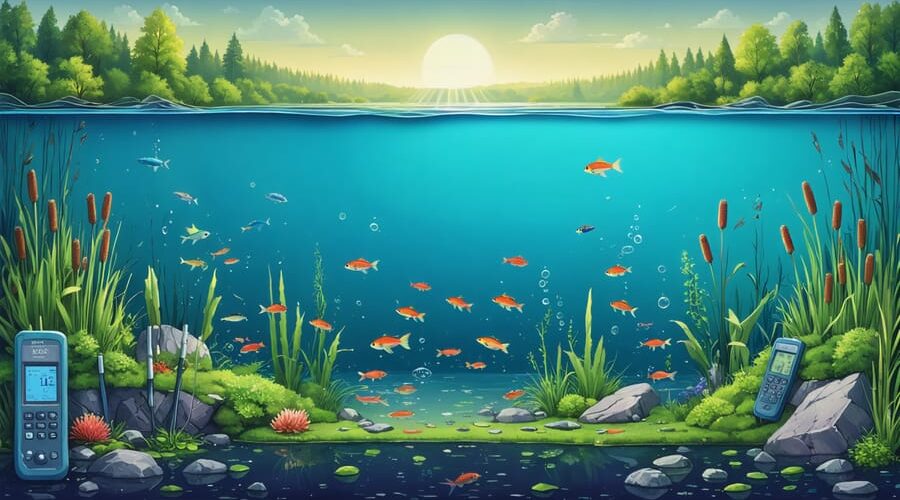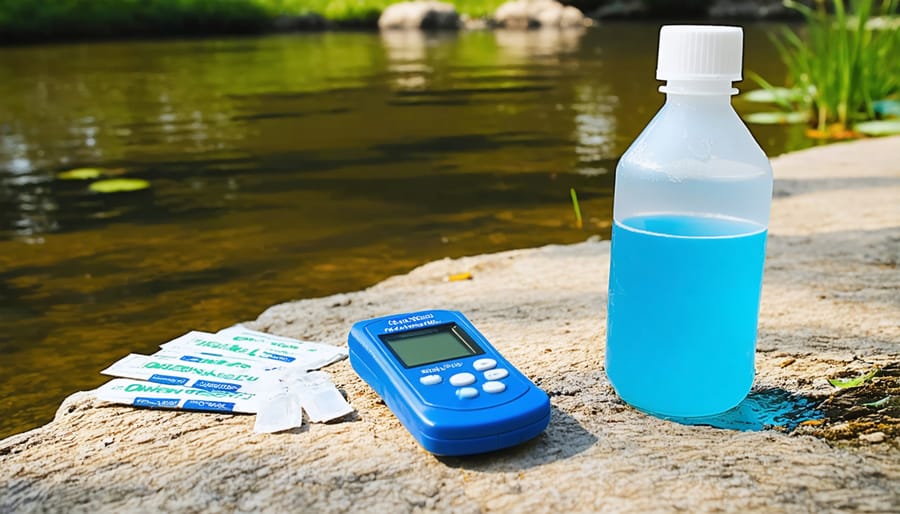
Master Your Pond’s Water Chemistry: The Essential Properties That Keep Fish Thriving
Water’s unique properties shape the delicate ecosystem of every pond, making it crucial for pond owners to understand and monitor these vital characteristics. From the way oxygen dissolves beneath the surface to how pH levels influence plant growth, these five fundamental water properties determine the health and vitality of your aquatic paradise. Whether you’re maintaining a small backyard water garden or managing a larger pond, mastering these essential properties will help you create the perfect environment for fish, plants, and beneficial microorganisms to thrive. Let’s dive into the key water properties that every pond enthusiast should monitor, understand, and maintain for a thriving aquatic ecosystem.
This introduction engages pond owners while setting up the importance of water properties, maintaining a friendly yet informative tone that appeals to both beginners and experienced enthusiasts. It avoids technical jargon while establishing authority and preparing readers for the detailed information to follow.
Dissolved Oxygen: The Lifeline of Your Pond

Measuring and Monitoring DO Levels
Regular water quality testing is essential for monitoring dissolved oxygen (DO) levels in your pond. The most reliable method is using a digital DO meter, which provides instant readings. For a budget-friendly option, consider DO test kits that use chemical reagents – they’re simple to use and give fairly accurate results.
Take measurements at different depths and times of day for the most accurate picture. Early morning readings are particularly important, as oxygen levels are typically lowest just before sunrise. For best results, test weekly during warm months and monthly during cooler seasons.
Keep a log of your measurements to track patterns and spot potential problems early. Healthy ponds should maintain DO levels between 6-8 mg/L. If levels drop below 5 mg/L, consider adding an aerator or fountain to boost oxygen content. Remember that cloudy days, dense plant growth, and warm temperatures can all impact DO levels, so adjust your monitoring schedule accordingly.
pH Balance: Finding the Sweet Spot
Natural pH Adjustment Methods
Maintaining the right pH in your pond doesn’t always require chemical solutions. There are several natural methods to adjust and stabilize pond pH that work wonderfully. Adding crushed coral or limestone to your filter system gradually releases minerals that help buffer pH levels. Driftwood can naturally lower pH if it’s too high, while adding well-rinsed oyster shells can help raise it when too low.
Water-loving plants like cattails and rushes naturally stabilize pH through their biological processes. Creating a diverse ecosystem with plenty of beneficial bacteria also helps maintain balanced pH levels. Regular partial water changes with aged water can prevent dramatic pH swings, and adding peat moss in mesh bags to your filter provides a gentle, sustained pH-lowering effect.
Remember to introduce these natural solutions gradually and monitor your pond’s response to avoid sudden changes that might stress your fish.
Temperature: The Hidden Influencer

Seasonal Temperature Management
Keeping your pond’s temperature stable throughout the seasons is crucial for a healthy ecosystem. During summer, use floating plants to provide natural shade and consider installing a pond umbrella for additional coverage during peak heat. In winter, maintain a hole in the ice using a de-icer or aerator to allow toxic gases to escape. For year-round temperature management, aim for a minimum pond depth of 2 feet, with 3-4 feet being ideal for most climates. Spring and fall require gradual temperature adjustments – avoid sudden water changes that could shock your fish. Installing a thermometer helps you monitor fluctuations and take action before problems arise. Remember that different fish species have varying temperature tolerances, so research your specific pond inhabitants’ needs.
Hardness: Understanding GH and KH
Balancing Mineral Content
To maintain proper mineral content in your pond, regularly test water hardness using a basic test kit. Add crushed coral or limestone to gradually increase hardness levels, or use water softening pillows to decrease them. Consider installing a reverse osmosis system for precise control. Remember to make adjustments slowly, as sudden changes can stress fish and plants. For natural hardness management, incorporate mineral-rich rocks like limestone into your pond design, or use dolomite gravel in your filter system. Check levels monthly and adjust as needed to keep your pond’s ecosystem balanced and healthy.

Clarity: More Than Just Aesthetics
Natural Clearing Solutions
Nature offers several effective solutions for maintaining clear pond water without harsh chemicals. Barley straw, when properly placed in mesh bags, naturally inhibits algae growth. Beneficial bacteria colonies help break down organic waste, while floating plants like water lilies and duckweed provide shade and compete with algae for nutrients. Adding pond snails and freshwater mussels creates a natural filtration system, as these creatures constantly clean the water. Strategic placement of UV-blocking plants around your pond’s edges also reduces algae growth by limiting excessive sunlight exposure.
Understanding and maintaining these five essential water properties – pH, dissolved oxygen, ammonia, nitrites, and temperature – is key to a healthy pond ecosystem. Regular testing and monitoring will help you catch potential issues before they become serious problems. Make it a habit to test your water parameters weekly and keep a log of the results. Consider investing in quality testing kits and maintaining a stock of beneficial bacteria products for quick interventions when needed. Remember to adjust your maintenance routine seasonally, paying extra attention during periods of extreme weather or high fish activity. With consistent care and attention to these fundamental properties, you’ll be rewarded with crystal-clear water and thriving aquatic life that brings joy to your outdoor space for years to come.
